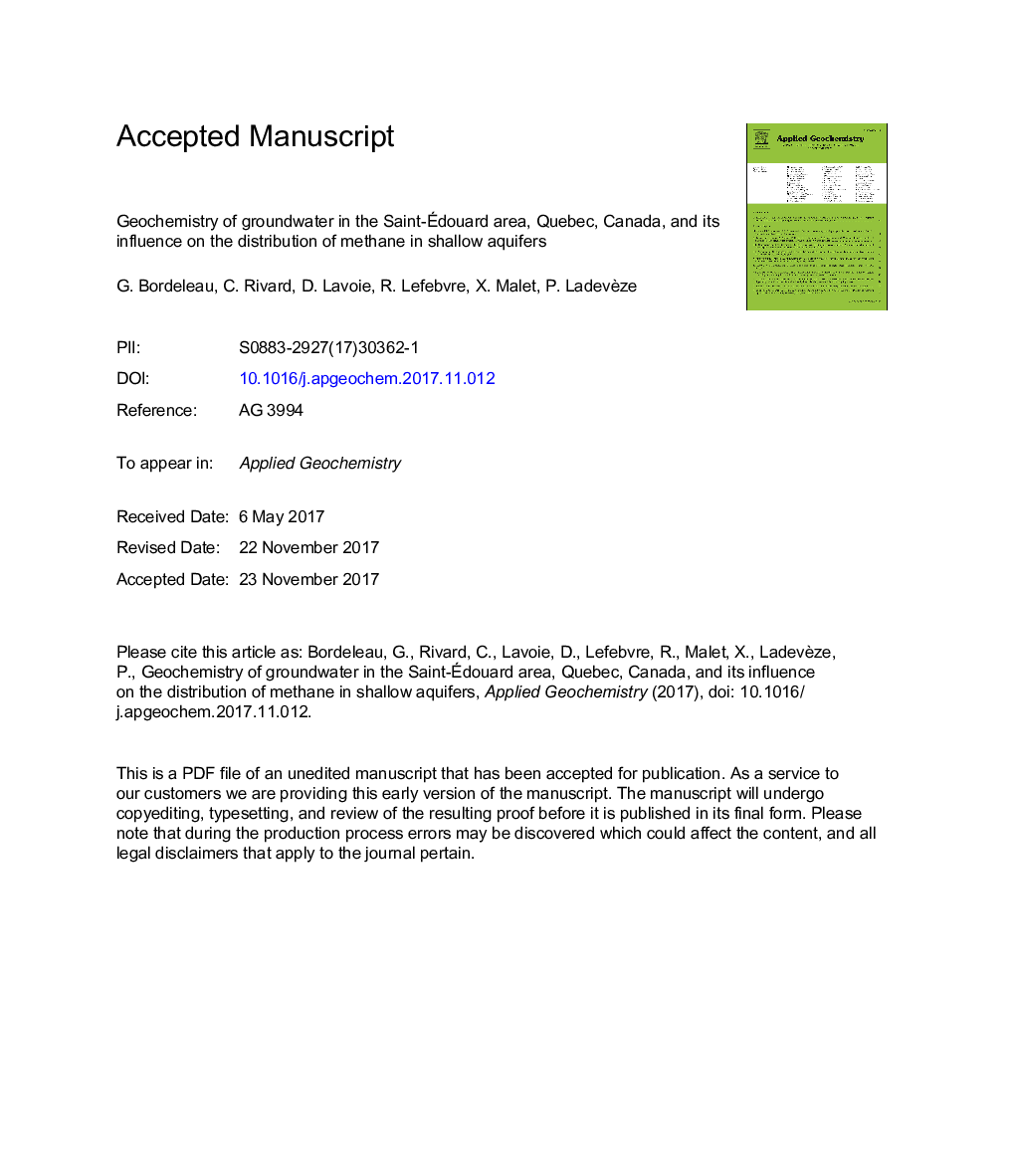| Article ID | Journal | Published Year | Pages | File Type |
|---|---|---|---|---|
| 8863194 | Applied Geochemistry | 2018 | 64 Pages |
Abstract
Results show that methane is present in 96% of the 48 sampling points over the 500Â km2 study area, and that concentrations are highly variable (from undetected (<0.006Â mg/L) to above 80Â mg/L), sometimes over short distances and through time. Methane concentrations appear to be related to bedrock geology and to specific hydrogeochemical conditions, such as those found below the active groundwater flow zone (0-30Â m within bedrock), where relatively old, chemically evolved water is found under semi-confined to confined conditions. Two main fault zones are well documented in the area, and there is clear evidence that some deep formation brines, in addition to marine water originating from the Champlain Sea, are migrating into shallow aquifers in the vicinity of one of them. This saline groundwater contribution is attributed to the regional groundwater flow coming from the Appalachians and discharging along this normal fault zone close to the St. Lawrence River. The depth from which the brine originates is, however, unknown, but should not exceed a few hundred meters, as there is no indication that deep thermogenic gas from the Utica Shale is currently reaching the surface, through this pathway or elsewhere in this region.
Keywords
Related Topics
Physical Sciences and Engineering
Earth and Planetary Sciences
Geochemistry and Petrology
Authors
G. Bordeleau, C. Rivard, D. Lavoie, R. Lefebvre, X. Malet, P. Ladevèze,
